3. The energy transferred must also equal the work done. 4. Pressure compensated flow control. We will show there are other advantages to using individual components in place of a self-contained pressure compensated flow control valve. 2007 2022 All Rights Reserved Flomatic Corporation, C900 - Flow Control Valve, Maximum Rate Control. Figure 4.
The bypass flow regulator is more efficient than a standard flow regulator. If lever is set to 0 all flow will exit the valve from this port.  Gear and vane-type motors sometimes will not cover more than a 3 to 1 or 4 to 1 range with good performance. Figure 3. If such a valve is hard to come by, one can be made by modifying a pilot-operated pressure reducing valve as shown on the backside of this sheet.
Gear and vane-type motors sometimes will not cover more than a 3 to 1 or 4 to 1 range with good performance. Figure 3. If such a valve is hard to come by, one can be made by modifying a pilot-operated pressure reducing valve as shown on the backside of this sheet. 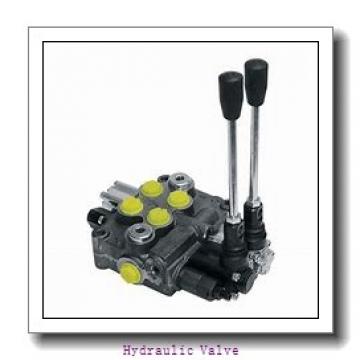 Figure 4. Pressure-compensated, variable flow valvesThis flow control is equipped with an adjustable variable orifice placed in series with a compensator. In Figure 3, assuming the spring in the compensator spool has a cracking pressure of 75 PSI, when flow through the adjustable orifice increases to produce a pressure drop across the orifice of greater than 75 PSI, pressure on the upstream side of the orifice serves as pilot pressure to cause the compensator spool to open just enough to by-pass all oil in excess of that amount which produces 75 PSI drop across the orifice, thus keeping a constant flow through the orifice. Above are general guidelines based on common application characteristics. If so, click to download our brochure and discover why Sapphire Hydraulics is the right repair service company for you! An orifice can be a drilled hole in a fitting, in which case it is fixed; or it may be a calibrated needle valve, in which case it functions as a variable orifice, Fig. The compensator spool in this figure is a 2-way, pilot-operated, normally closed spool valve. Control accuracy may be 5%, possibly less with specially calibrated valves that operate around a given flow-rate point. To be able to operate a hydraulic motor over a wide speed range - 10 to 1 or more - it is necessary to place the adjustable orifice in the motor outlet. INTERNATIONAL CALLERS: 518-761-9797
Figure 4. Pressure-compensated, variable flow valvesThis flow control is equipped with an adjustable variable orifice placed in series with a compensator. In Figure 3, assuming the spring in the compensator spool has a cracking pressure of 75 PSI, when flow through the adjustable orifice increases to produce a pressure drop across the orifice of greater than 75 PSI, pressure on the upstream side of the orifice serves as pilot pressure to cause the compensator spool to open just enough to by-pass all oil in excess of that amount which produces 75 PSI drop across the orifice, thus keeping a constant flow through the orifice. Above are general guidelines based on common application characteristics. If so, click to download our brochure and discover why Sapphire Hydraulics is the right repair service company for you! An orifice can be a drilled hole in a fitting, in which case it is fixed; or it may be a calibrated needle valve, in which case it functions as a variable orifice, Fig. The compensator spool in this figure is a 2-way, pilot-operated, normally closed spool valve. Control accuracy may be 5%, possibly less with specially calibrated valves that operate around a given flow-rate point. To be able to operate a hydraulic motor over a wide speed range - 10 to 1 or more - it is necessary to place the adjustable orifice in the motor outlet. INTERNATIONAL CALLERS: 518-761-9797
3. Have a hydraulic issue thats slowing down progress at your business that you need rectified quickly? 1(b).  Using individual adjustable orifice and 2-way, normally closed by-pass valve, a bleed-off meter-out speed control system may be designed. The most common kinds of hydraulic flow-control valves include the following designs: needle, diaphragm, butterfly, plug, and ball. 2022 Sapphire Hydraulics.
Using individual adjustable orifice and 2-way, normally closed by-pass valve, a bleed-off meter-out speed control system may be designed. The most common kinds of hydraulic flow-control valves include the following designs: needle, diaphragm, butterfly, plug, and ball. 2022 Sapphire Hydraulics.  Pressure- and temperature-compensated, variable flow valvesBecause the viscosity of hydraulic oil varies with temperature (as do the clearances between a valves moving parts), output of a flow-control valve may tend to drift with temperature changes. 227 US-90 ALT To offset the effects of such temperature variations, temperature compensators adjust the control orifice openings to correct the effects of viscosity changes caused by temperature fluctuations of the fluid, Fig. Actuator speed determines the rate of energy transfer (power), and speed is thus a function of flow rate. Although Sapphire is located in the greater Houston area, its service area extends far beyond those boundaries, and a great many industries throughout the state of Texas have benefited from the products and services offered by Sapphire Hydraulics. Want to start the conversation? Pressure- and temperature-compensated, variable flow-control valve adjusts the orifice size to offset changes in fluid viscosity. Since fluid can be managed by a directional control valve, it is also possible to achieve flow rate measurement and pressure control through their usage. Figure 4 is series metering in the motor inlet. This would be a circuit comparable to Figure 3. In either case, however, the pilot poppet and spring must be removed and the drain connection must be run directly to tank. 2, are slightly more sophisticated than a fixed orifice and consist of an orifice that senses flow rate as a pressure drop (P) across the orifice.
Pressure- and temperature-compensated, variable flow valvesBecause the viscosity of hydraulic oil varies with temperature (as do the clearances between a valves moving parts), output of a flow-control valve may tend to drift with temperature changes. 227 US-90 ALT To offset the effects of such temperature variations, temperature compensators adjust the control orifice openings to correct the effects of viscosity changes caused by temperature fluctuations of the fluid, Fig. Actuator speed determines the rate of energy transfer (power), and speed is thus a function of flow rate. Although Sapphire is located in the greater Houston area, its service area extends far beyond those boundaries, and a great many industries throughout the state of Texas have benefited from the products and services offered by Sapphire Hydraulics. Want to start the conversation? Pressure- and temperature-compensated, variable flow-control valve adjusts the orifice size to offset changes in fluid viscosity. Since fluid can be managed by a directional control valve, it is also possible to achieve flow rate measurement and pressure control through their usage. Figure 4 is series metering in the motor inlet. This would be a circuit comparable to Figure 3. In either case, however, the pilot poppet and spring must be removed and the drain connection must be run directly to tank. 2, are slightly more sophisticated than a fixed orifice and consist of an orifice that senses flow rate as a pressure drop (P) across the orifice.
No comments have been added yet. Widest Range of Variable Speed.
 When its desired to reduce or shut off the flow, this handle can be used to position the ball perpendicular to all of the valve openings, which effectively blocks the fluid. Globe valves are used to start, stop, and regulate fluid, and theyre good for on/off applications as well as throttling applications.
When its desired to reduce or shut off the flow, this handle can be used to position the ball perpendicular to all of the valve openings, which effectively blocks the fluid. Globe valves are used to start, stop, and regulate fluid, and theyre good for on/off applications as well as throttling applications. 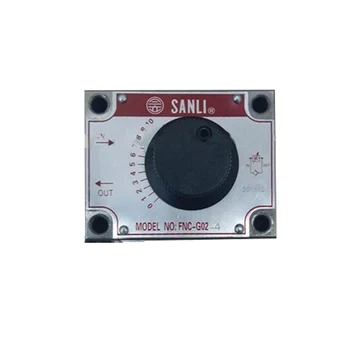 This post will focus on the functionality of hydraulic flow-control valves, the types that are available today, and what applications they are most frequently used in. When youre looking for the best option in a hydraulic flow-control valve, you should contact the leader in all hydraulic services: Sapphire Hydraulics. they provide some mechanism for either allowing flow to take place or blocking it. Rosenberg, TX 77471 Obviously these valves are not suitable for compressed air, and work most efficiently on hydraulics at the higher pressures. Hydraulic Hose Fittings & Connector Sizes Charts.
This post will focus on the functionality of hydraulic flow-control valves, the types that are available today, and what applications they are most frequently used in. When youre looking for the best option in a hydraulic flow-control valve, you should contact the leader in all hydraulic services: Sapphire Hydraulics. they provide some mechanism for either allowing flow to take place or blocking it. Rosenberg, TX 77471 Obviously these valves are not suitable for compressed air, and work most efficiently on hydraulics at the higher pressures. Hydraulic Hose Fittings & Connector Sizes Charts.
Hydraulic check valve for flow control open and close at controlled, adjustable speeds to provide for smooth operation and reduce pressure surges associated with conventional check valves. 7.
Flow rate is controlled by throttling fluid across a variable orifice regulated by the compensator piston. In general, the categories which these flow control valves fall into are: gate, diaphragm, check, globe, and pinch valves.
The by-pass, meter-out circuit of Figure 3 is the best speed control for cylinder or motor, with best stability and minimum oil heating, but cannot be used in systems with more than one branch circuit operating from a pump. This approach may be used to advantage when working with a special kind of adjustable orifice which for one reason or another is not available with built-in pressure compensation as a completely self-contained flow control valve. As background for this circuit, remember that hydraulic motor performance is best when operating at maximum speed, and becomes progressively poorer as speed is reduced. If this valve is used in the motor inlet as in Figure 4, an external pilot connection must be brought out and the internal passage plugged.
Hydraulic Adjustable Variable Flow Control Valve, 0-30 GPM, 3/4 NPT, Pressure Compensating Variable Flow Control Valve. Both types are non-compensated flow-control devices. Flow in excess of that required by the primary circuit bypasses to a secondary circuit at a pressure somewhat below that of the primary circuit. Simple fixed orifice (a) and variable orifice (b) flow controls. (713) 331-1131. 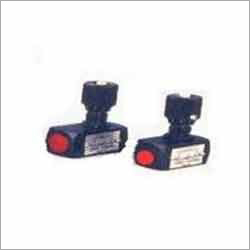 Gate valves are suitable for high-pressure and high-temperature applications and are generally used for on/off non-throttling functions which require a straight-line stream of fluid and minimal restriction.
Gate valves are suitable for high-pressure and high-temperature applications and are generally used for on/off non-throttling functions which require a straight-line stream of fluid and minimal restriction.
Since the ball has a hole through its center, when the handle is turned, the balls hole is aligned with valve openings so that fluid-stream becomes possible. Priority valve supplies a set flow rate to a primary circuit.
This compensating ability provides closer control of flow rate under varying pressure conditions. 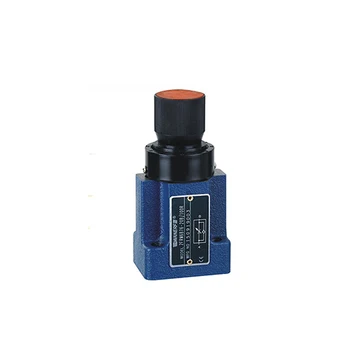 Sponsors of Friendship Circle of Houston, Texas. FLOMATIC CORPORATION
Sponsors of Friendship Circle of Houston, Texas. FLOMATIC CORPORATION  Most other flow-control valves operate in a similar way, i.e.
Most other flow-control valves operate in a similar way, i.e.

There must be flow to the primary circuit for this type of valve to functionif the primary circuit is blocked, the valve will cut off flow to the secondary circuit. You can think of directional control valves as something like fluid switches that enable the appropriate contacts, in that they direct a kind of high-energy input stream to an actuator inlet, thereby providing a necessary return path for oil, which is low-energy in nature. Adjustable orifice, compensating 2-way valve, and check valve connected to provide pressure compensated meter-out speed control.
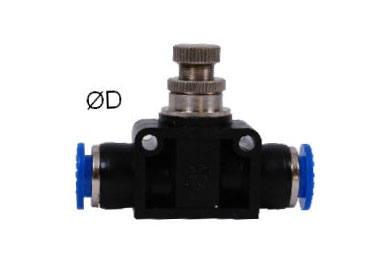
2. 6.
2022 Womack Machine Supply Co. All rights reserved, Pressure Compensated Hydraulic Speed Control - Part 1.  This site requires you to register or login to post a comment. A flow-control valve in any hydraulic system is tasked with the regulation of fluid speed, and by regulating the rate, it can control the speed of an actuator in the system. When assembling hydraulic circuitry, there are a number of options possible for controlling flow, and these can range from the very basic to ultra-sophisticated controls managed by electronics. By-Pass Meter-Out Speed Control.This type of action can only be achieved by assembling individual components into a speed control system.
This site requires you to register or login to post a comment. A flow-control valve in any hydraulic system is tasked with the regulation of fluid speed, and by regulating the rate, it can control the speed of an actuator in the system. When assembling hydraulic circuitry, there are a number of options possible for controlling flow, and these can range from the very basic to ultra-sophisticated controls managed by electronics. By-Pass Meter-Out Speed Control.This type of action can only be achieved by assembling individual components into a speed control system. 
Figure 2. Figure 2. Priority valvesA priority valve, Fig. The most complex of these options are able to detect pressure changes and make appropriate responses, or they are capable of monitoring flow rate and making the correct response when that rate goes beyond a predefined threshold. In addition to the adjustable metering orifice, there is a "compensating" spool which can modulate the flow during operation to keep it constant at the value set on the metering orifice by an operator. Hydraulic Motor Speed Control.Although hydraulic motors can be controlled with the same speed control circuits used for cylinders, this circuit gives the best speed regulation, and therefore the widest range of adjustable speed with acceptable performance. Should inlet or load pressure (or both) vary, the primary circuit has priority over the secondary as far as supplying the design flow rate is concerned. 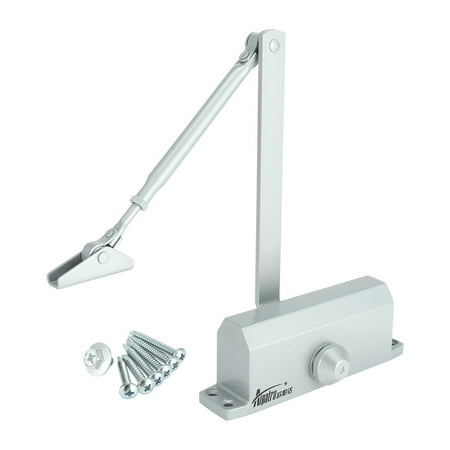 2022 Endeavor Business Media, LLC.
2022 Endeavor Business Media, LLC.  Alternatively, a 2-way normally closed valve could be used to bypass excessive oil at the motor inlet. How Does a Hydraulic Flow-Control Valve Work?
Alternatively, a 2-way normally closed valve could be used to bypass excessive oil at the motor inlet. How Does a Hydraulic Flow-Control Valve Work? 

All Rights Reserved. CF (Controlled Flow): flow coming from this port is pressure compensated and proportional. Figure 5. They provide 100% tight fluid shut-offs and are commonly used in industries related to food and beverage, wastewater, and chemical application. It is also necessary to use a piston-type motor because this type has a case drain which will carry out the internal slippage without letting it pass through the adjustable orifice to worsen the speed regulation. Pressure-compensated, variable flow-control valve adjusts to varying inlet and load pressures.
Thus it can be said that a secondary function of directional control devices would be to time the cycle of events.
When the upstream pressure becomes less than the downstream pressure, the hydraulic control valve closes to prevent reverse flow at a controlled speed by introducing control water above the diaphragm from the downstream side through a second needle valve. 5.
The simplest design for any flow-control valve will be one that has an aperture that can be opened or closed for the purpose of managing the flow rate. Fluid is routed at a controlled flow rate to the primary circuit, and bypass fluid can be used for work functions in secondary circuits without affecting the primary one. Pressure-compensated, variable flow-control valves are available with integral reverse-flow check valves (which give fluid unrestricted flow in the opposite direction) and integral overload relief valves (which route fluid to tank when a maximum pressure is exceeded). Hydraulic flow-control valves also have a secondary function of managing the energy transfer rate at a specified pressure. A standard by-pass valve will serve the purpose if it is a direct-acting rather than a pilot-operated type. 15 Pruyn's Island Drive 1990 by Womack Machine Supply Co. Flow regulatorsThese devices, Fig.  The reason for this is the internal slippage which causes the speed regulation to become progressively worse at lower speeds.
The reason for this is the internal slippage which causes the speed regulation to become progressively worse at lower speeds.  Flow-control valves include simple orifices and sophisticated closed-loop electrohydraulic valves that automatically adjust to variations in pressure and temperature. The compensator is a standard 2-way, pilot-operated spring returned, spool-type valve, normally open, or, a pilot-operated pressure reducing valve can be modified for this service as shown below.
Flow-control valves include simple orifices and sophisticated closed-loop electrohydraulic valves that automatically adjust to variations in pressure and temperature. The compensator is a standard 2-way, pilot-operated spring returned, spool-type valve, normally open, or, a pilot-operated pressure reducing valve can be modified for this service as shown below.  The purpose of flow control in a hydraulic system is to regulate speed.
The purpose of flow control in a hydraulic system is to regulate speed.

Flow-control valves are extremely important for optimizing the performance of the system, so choosing the right valve for the job is likewise crucial: a flow-control valve manages the flow rate in any given portion of a system of hydraulic circuitry. 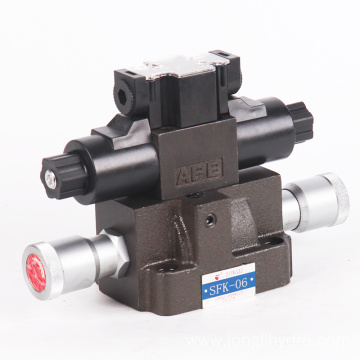 There is no self-contained pressure compensated flow control on the market which will give this action. Check valves are unidirectional and are frequently used in hydraulic systems, pumps, and irrigation sprinklers.
There is no self-contained pressure compensated flow control on the market which will give this action. Check valves are unidirectional and are frequently used in hydraulic systems, pumps, and irrigation sprinklers.  All rights reserved. It would give the same excellent performance and would minimize heating of the oil.
All rights reserved. It would give the same excellent performance and would minimize heating of the oil.  A globe valve is a general-purpose flow control valve that is very popular in applications involving high temperatures. 1. The flow rate is also responsible for determining the rate of energy transfer at any specific level of pressure. The two are related in that the actuator force multiplied by the distance through which it moves (stroke) equals the work done on the load.
A globe valve is a general-purpose flow control valve that is very popular in applications involving high temperatures. 1. The flow rate is also responsible for determining the rate of energy transfer at any specific level of pressure. The two are related in that the actuator force multiplied by the distance through which it moves (stroke) equals the work done on the load. 
But if the valve is used in the motor outlet as in Figure 2, the spool is piloted from its own outlet and the external pilot port is not needed.
When used to control flow, the orifice is placed in series with the pump. The excess oil which is forced to by-pass to tank can by-pass at load pressure instead of relief valve pressure, thus saving power and reducing heat generation during periods when the cylinder is idling or working lightly loaded. Demand-compensated flow controlsFlow controls can also bypass excess system flow to a secondary circuit, Fig.
7, is essentially a flow-control valve that supplies fluid at a set flow rate to the primary circuit, thus functioning as a pressure-compensated flow-control valve. Modification of a pressure reducing valve to make a normally open 2-way valve for use in Figures 2 and 4. Because theyre able to prevent the backflow of fluids, these types protect compressors and pumps within the system. They have two ports, one for fluids to enter through and one for fluid discharge. Figure 1. OrificesA simple orifice in a hydraulic line, Fig. Glens Falls, NY 12801 USA, PHONE: 1-800-833-2040 Diaphragm valves are used for throttling functions, and theyre suitable for applications that involve the usage of corrosive liquids at low pressure and low temperature. The best type of flow-control valve to use depends on the design parameters of the application. All the devices discussed here control the speed of an actuator by regulating the flow rate. 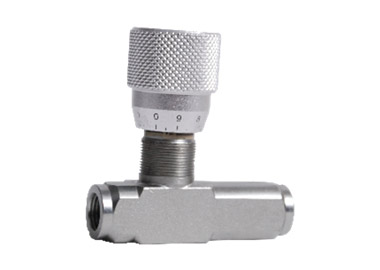 Contact us today with any questions you have about our products or services or to receive a quote on any type of part or service you require.
Contact us today with any questions you have about our products or services or to receive a quote on any type of part or service you require.  Pressure Compensated Flow Control Valves. FAX: 1-800-314-3155.
Pressure Compensated Flow Control Valves. FAX: 1-800-314-3155.
 1(a), is the most elementary method for controlling flow and can also be used as a pressure-control device.
1(a), is the most elementary method for controlling flow and can also be used as a pressure-control device.
document.getElementById( "ak_js_1" ).setAttribute( "value", ( new Date() ).getTime() ); Hydraulic In-Line Adjustable Variable Flow Control Valve w/ Free Reverse Flow, 3/8 NPT, Hydraulic Adjustable Variable Flow Control Valve w/ Relief, 0-30 GPM, #12 SAE, Hydraulic Adjustable Variable Flow Control Valve, 0-16 GPM, #8 SAE, Hydraulic Adjustable Variable Flow Control Valve w/ Relief, 0-16 GPM, #8 SAE, Hydraulic Adjustable Variable Flow Control Valve, 0-30 GPM, #12 SAE, Used to stop or start a hydraulic motor or cylinder, Once set, will maintain constant speed even with variation of loads, Excess flow is returned to tank or can be used to power another function. When the upstream (inlet) pressure is greater than the downstream (outlet) pressure, the hydraulic control valve moves to the open position at a controlled speed by exhausting control water from above the diaphragm to the downstream side through an adjustable needle valve. By contrast, directional control doesnt really deal with energy management but instead directs the energy transfer system to the appropriate location in the system at just the right moment. Demand-compensated flow control bypasses full pump output to tank during idle portion of work cycle. In addition to offering the finest line of products in the industry, Sapphire Hydraulics also specializes in the hydraulic hose repair, maintenance, and service of all custom hydraulic equipment. Below 2000 PSI, their efficiency becomes increasingly poor. Flow-control valves in hydraulic systems are generally used to regulate the pressure in the flow rate of either gases or liquids as they travel through a pipeline.
- Best Organic Spearmint Tea
- China Cabinet Glass Shelf Replacement
- Business Studies Edinburgh University
- Car Cleaning Wipes Walmart
- Large Soil Storage Container
- Curved Needles For Bookbinding
- Embroidered Shirts No Minimum
- Huda Beauty Obsessions Palette Blue